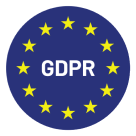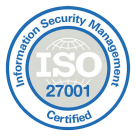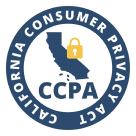You’ve seen the hype—AI voice agents can cut traditional call center costs by up to 70%¹. They’re fast, scalable, and work 24/7. But before you commit, there’s one question every smart buyer asks: how much does voice AI really cost?
Before diving into the numbers, it’s worth understanding what’s involved in setting up the technology behind voice AI so you can estimate the full investment from day one.
This guide breaks down real numbers, hidden fees, and what to expect in 2025 so you can budget with confidence and avoid surprises.
Key takeaways
-
Voice AI costs vary by provider—ranging from $0.01 to $0.25/min depending on usage, voice quality, and feature complexity.
-
Subscription, pay-per-use, and hybrid models dominate the market. Each fits different needs, from predictable budgeting to flexible scaling.
-
Extra fees add up fast. Watch for charges on custom voices, integrations, overages, and compliance—especially at the enterprise level.
-
Top platforms like CloudTalk, Synthflow, VoiceSpin, Retell AI, and Bland AI offer vastly different pricing structures, features, and setup requirements.
-
The best provider is the one that aligns with your goals, not just your budget. Look for a mix of transparency, scalability, and ease of use.
Not sure if it’s worth the cost? See it in action.
How Much Does Voice AI Cost?
Voice AI typically costs $0.01–$0.25 per minute, with monthly subscriptions starting at $15 and scaling to thousands depending on usage, voice quality, and features.
Basic voice AI—like text-to-speech or speech recognition—can cost as little as $0.008 per minute. These are ideal for simple tasks like voice prompts or basic automation.
Mid-range solutions, often used in customer support and sales, range from $0.10 to $0.25 per minute. These usually include natural-sounding voices, CRM integrations, and smart routing features.
Pricing models vary by provider. Some charge by the minute, while others offer subscription bundles or even outcome-based pricing for sales-driven use cases.
Getting clear on the cost of AI voice assistants means looking beyond per-minute rates—consider long-term impact on support efficiency and customer satisfaction.
Understanding Voice AI Pricing Models
Voice AI platforms typically use three pricing models: subscription, pay-per-use, and hybrid. Each suits different business needs depending on call volume, growth stage, and required features.
Subscription Pricing
What it is:
You pay a fixed monthly or annual fee based on plan tiers. These tiers often include bundled usage, integrations, and platform features.
Cost:
Basic plans starts around $15/month per user for basic plans. Higher tiers for support or sales teams may include CRM integrations, IVR, AI features, and more.
Best for:
Businesses with steady, predictable call volumes that want simplified budgeting and full access to platform features without per-minute variability.
Pay-Per-Minute or Pay-Per-Use
What it is:
You’re charged based on actual usage—typically per minute, per interaction, or per task completed by the AI. Some platforms also calculate voice AI cost per conversation, especially in sales-driven or support-resolution pricing models.
Cost:
Usually ranges from $0.01 to $0.25 per minute. Some platforms also charge for outbound attempts, API calls, or successful resolutions.
Best for:
Startups, seasonal teams, or businesses testing AI voice technology. Offers flexibility, but costs can spike during high-usage periods.
Hybrid Pricing
What it is:
Hybrid models combine the best of both worlds—a base subscription that includes core features and usage plus per-minute charges.
Cost:
CloudTalk, for example, offers pricing tiers starting at $19/user/month in North America and LATAM, covering key features like call routing, analytics, and integrations. You can then activate AI voice agents at $0.25 per minute, scaling up or down based on real usage—no plan-switching required.
Best for:
Hybrid pricing is especially useful for teams focused on voice AI cost optimization, offering predictable access with flexible scaling.

Test CloudTalk’s hybrid pricing—predictable and scalable.

Voice AI Cost Breakdown: Key Factors That Impact Pricing
AI voice assistant costs aren’t one-size-fits-all. Pricing depends on how you use it, what features you need, and how complex your implementation is. Here’s a breakdown of the key factors:
-
Usage volume: The more calls your AI handles—and the more it manages at once—the higher the cost. Most platforms scale pricing with usage to reflect processing demand.
-
Feature set and task complexity: Advanced capabilities like Sentiment Analysis, multilingual support, or AI voice agents trained for negotiation or technical support will raise costs. Simpler use cases—like scheduling or call routing—are more affordable.
-
Voice quality and AI model performance: Basic voices cost less, but premium, natural-sounding AI voices come at a higher price. Similarly, stronger Natural Language Understanding (NLU) models tend to be more expensive due to better accuracy and responsiveness.
-
Integrations and customization: Connecting with your CRM or helpdesk (like Salesforce or Zendesk) may add cost, especially if custom development is required. Likewise, building a custom-branded voice or tailored AI workflow increases implementation complexity.
-
Security, compliance, and SLAs: Industries like healthcare or finance often need HIPAA or GDPR-compliant solutions. These come with higher infrastructure, support, and certification costs. If you require SLAs or premium support tiers, expect that to factor into pricing as well.
-
API and token usage: If your voice AI solution connects via API, pricing may be tied to the number of calls or tokens (units of input/output). This is common for developers or teams customizing their own AI voice assistant logic.
Extra Voice AI Costs You Should Know About
The base voice AI price—whether pay-per-minute or monthly subscription—only tells part of the story. Depending on your setup, usage, and requirements, several add-ons may affect your final bill. Here’s what to watch for:
High-Fidelity or Custom Voices
Premium or branded voices may cost more than standard options. Expect to pay $0.02–$0.07 per minute, or a one-time setup fee of $1,000–$5,000 for custom voice design.
However, with solutions like CloudTalk, you can customize your AI voice agent’s tone and personality without hidden fees—starting at just $0.25/minute. This makes brand consistency more accessible and budget-friendly, even for growing teams
Multilingual or Uncommon Language Support
Adding multiple languages increases your cost of voice AI per minute, especially for less common or regional languages.
These add-ons typically start around $0.01/minute, and are essential if you serve international or multilingual customers.
With CloudTalk, however, you get access to over 60 languages and accents through custom pricing, along with volume-based pricing discounts—as low as $0.10 per minute. This allows global businesses to scale their voice AI experience without sacrificing quality or cost-efficiency.
Integrations & API Orchestration
Need to connect your AI voice assistant with CRMs like HubSpot or help desks like Zendesk?
Complex integrations or API orchestration may involve custom development fees—either one-time or recurring. These are often overlooked in early voice AI cost estimators.
With CloudTalk, however, you get access to a wide range of integrations starting at just $29 per user/month—with no hidden surprises. This makes it easier to connect your tech stack without unexpected costs or delays.
Onboarding, Training & Customization
Personalized flows, branded prompts, and training can drive voice AI implementation costs into the hundreds or thousands.
This includes building custom IVRs, unique call flows, or onboarding services that tailor the AI voice agent to your business use case.
With CloudTalk, you simply pay a fixed subscription for the features you use, plus $0.25 per minute for calls made or answered by the voice agent—no more, no less. This transparent pricing model helps you plan ahead and scale confidently without worrying about unexpected costs.
Overage Charges
Most plans include a usage cap. Once exceeded, overage rates can be 1.5× to 2× the base voice AI cost per minute. This is especially relevant for businesses with fluctuating call volumes.
At CloudTalk, we change the rules: you pay a fixed rate of $0.25 per minute, and the more you use, the less you pay, thanks to built-in volume-based discounts. No usage caps, no surprise overages—just transparent, scalable pricing that grows with you.
Storage, Compliance & Usage Rights
If your industry requires secure call recording or transcript storage (like healthcare or finance), expect added fees for compliance and data retention.
Some platforms also charge for commercial usage rights, especially when AI voice technology is used in public content.
At CloudTalk, we’re fully compliant with GDPR, CCPA, and industry-specific regulations like HIPAA—so you can handle sensitive data with confidence, without worrying about unexpected compliance costs.
Premium Support & SLAs
Want 24/7 support, a dedicated account manager, or enterprise-level SLAs?
These premium services increase your AI voice agent price, but may be non-negotiable for mission-critical operations.
With CloudTalk, you get 24/7 live agent support starting at just $29/user/month, and if you need dedicated assistance, the Expert Plan ($49/user/month) includes a dedicated account manager to guide your success. This ensures reliable, responsive support without the enterprise-level price tag.
Top 5 Voice AI Providers Compared: What You Get vs. What You Pay
The global Voice AI market is expected to soar to $47.5 billion by 2034²—a clear sign that voice technology is here to stay. But with so many providers entering the space, each offering different features, pricing models, and levels of support, choosing the right one can quickly become overwhelming.
To help you cut through the noise, we’ve broken down the top 5 Voice AI providers—so you can see exactly what you’re paying for and what value you’re getting in return.
The comparison table below provides a quick overview of all five platforms, so you can spot the key differences at a glance. Prefer a deeper dive? Scroll down for detailed reviews of each provider.
| Provider | Starting Price | Key Features | Best For |
|---|---|---|---|
| CloudTalk | $0.25/min + $19/user/month (NAM & LATAM) or $25/user/month | Multilingual AI, CRM integrations, no-code builder, Sentiment Analysis | SMBs and global teams needing scalable AI with CRM integration |
| Synthflow | $29/month | No-code builder, live AI voice, CRM/workflow integrations, memory across calls | SMEs to enterprises needing fast deployment and automations |
| VoiceSpin | $1,000/month | AI dialer, analytics, appointment booking, local numbers | Sales-heavy teams and support centers with high outbound volume |
| Retell AI | $0.07+/minute or $3,000+/month | 800ms latency, GPT-4o AI, multilingual, omnichannel, APIs | High-volume businesses needing real-time, natural conversations |
| Bland AI | Free (Start plan) or $0.09/min | Hyper-realistic voice, API control, recall memory, self-hosted infrastructure | Enterprises needing full control, customization and massive scale |
Why Trust Our Software Review?
For nearly 10 years, we’ve been helping more than 30,000 professionals with our solutions. Along the way, we’ve worked closely with experts across customer support, sales, and operations—listening to their challenges and following market trends.
To support better software decisions, we’ve reviewed over 200 software tools across industries. In the process, we’ve analyzed 5,500+ verified customer reviews from platforms like G2, Gartner, Capterra, and TrustRadius, plus real discussions on Reddit and Quora.
In the last year alone, we published over 1,000 articles—each one written by humans for humans, with care and a deep understanding of our customers’ needs. The reviews are based on trustworthy data, with one clear goal: to provide reliable insights and answers for you.
Learn how we keep our content integrity and our software review methodology.
#1 CloudTalk
CloudTalk, trusted by over 4,000 customers worldwide, sets the bar with a powerful mix of accuracy, flexibility, and affordability. Its AI voice agent combines advanced speech recognition, multilingual support, and seamless CRM integrations in a scalable, cloud-based system.
With no-code setup, 99.7% uptime, and local numbers in 160+ countries, CloudTalk helps companies automate routine tasks while maintaining a human touch.
Key Features
-
Human-like and multilingual interactions: CloudTalk’s AI voice agents adapt tone, pace, and speaking style to reflect caller emotion and context. With support for over 60 languages, every conversation feels natural and brand-consistent.
-
Omnichannel integration: Seamless integration with CRMs, helpdesks, and ticketing systems ensures customer context is preserved across channels—including voice, SMS, and WhatsApp.
-
No-code setup and visual flow builder: Deploy and configure AI voice agents without writing code. The intuitive dashboard and drag-and-drop builder make it easy to design conversation flows and behaviors.
-
Analytics, Reporting, and Sentiment Analysis: Real-time dashboards, searchable transcripts, and sentiment detection provide deep visibility into performance, helping teams improve efficiency and customer experience.
Top Integrations
Best for
SMBs and global teams needing fast, human-like automation with seamless CRM integration.
Pricing
AI Voice Agent Pricing
CloudTalk offers a simple and scalable pricing model for its AI voice agent—designed to grow with your business:
-
CeTe Voice Agent (€0.25/minute)
-
Custom Voice Agent (Custom pricing)
CloudTalk Subscription Plans
CloudTalk offers four pricing plans:
-
Lite ($19/user/month])
-
Starter ($25/user/month])
-
Essential ($29/user/month)
-
Expert ($49/user/month)
-
Custom (Varies)

AI Voice Agents
Sales Reminder
Agent
Client
Sales / Marketing
Course Inquiry
Agent
Client
Education / EdTech
Payment Reminder
Agent
Client
Financial Services
Healthcare Intake
Agent
Client
Healthcare
Insurance Intake
Agent
Client
Insurance
T&C Acceptance
Agent
Client
Legal Services
Legal Intake
Agent
Client
Legal Services
Candidate Feedback
Agent
Client
Recruitment / HR
Applicant Pre-screen
Agent
Client
Recruitment / HR
Action Reminder
Agent
Client
SaaS / Software & Apps
Subscription Renewal
Agent
Client
SaaS / Software & Apps
CX Feedback
Agent
Client
SaaS / Software & Apps
Post-Sales Feedback
Agent
Client
SaaS / Software & Apps
Trial Signup
Qualifier
Client
SaaS / Software & Apps
#2 Synthflow
Synthflow is a no-code AI voice platform that lets businesses build and deploy voice agents in under 30 minutes—no programming required. It supports multilingual, 24/7 automation for tasks like call routing, booking, and SMS follow-ups. Backed by $7M in funding and 45M+ calls automated, Synthflow combines ease of use with enterprise-grade features.
Key Features
-
No-code visual builder: Allows users to create AI voice agents quickly without programming by visually designing conversations, questions, replies, and actions such as scheduling and follow-ups.
-
Human-like AI voices: Offers a broad selection of customizable, natural-sounding voices that can be tailored to match a brand’s personality and support multiple languages and accents.
-
Real-time voice interactions: Supports live, natural conversations with advanced speech recognition and natural language understanding, enabling agents to answer, qualify leads, book appointments, and resolve inquiries in real time.
-
Integrations and automation: Connects seamlessly with CRM systems, calendars, tools like Zapier and HubSpot, and can route calls or trigger automated workflows such as SMS follow-ups or notification.
Top Integrations
-
GoHighLevel
Best for
SMEs to enterprises, offering no-code setup, per-minute pricing, and deep CRM integrations.
Pricing
-
Starter ($29/month)
-
Pro ($375/month)
-
Growth ($750/month)
-
Agency ($1,250/month)
-
Enterprise (Custom pricing)
#3 VoiceSpin
VoiceSpin is a cloud-based AI-powered contact center and communication platform that combines advanced VoIP technologies with AI-driven features like predictive dialing, speech analytics, automated workflows, and omnichannel messaging (voice, SMS, WhatsApp, etc.) to streamline operations, increase productivity, and improve customer engagement
Key Features
-
Reporting and analytics: Detailed, customizable dashboards and reports to track agent performance, call outcomes, and critical metrics.
-
International DID Numbers and local caller ID: Access to local numbers to increase call answer rates on outbound campaigns.
-
Integration with AI dialer: The AI voice agent works with VoiceSpin’s AI predictive dialer to automate outbound campaigns, lead generation, follow-ups, and appointment reminders.
-
Calendar and appointment management: It can access calendar systems in real time to check availability, suggest time slots, book appointments or demo calls, send confirmations, and reminders without human intervention.
Top Integrations
Best for
Businesses that rely heavily on sales, support, or outbound calling. It supports high call volumes, compliance-heavy industries, and teams of any size.
Pricing
-
Basic ($300/month) – AI Voice Agent not included
-
Advanced ($525/month) – AI Voice Agent not included
-
Enterprise ($1,000/month) – Includes AI Voice Agent
#4 Retell AI
Retell AI offers low-latency, human-like voice agents that automate calls, appointments, and admin tasks with responses as fast as 800ms. Its no-code setup, GPT-4o-powered conversations, and omnichannel support (voice, SMS, chat) make it ideal for scalable, natural customer engagement.
Key Features
-
Human-like conversational AI: Uses advanced large language models (LLMs) to create voice agents that handle complex, multi-turn conversations naturally, including interruption handling and emotional intelligence.
-
Multilingual support: Supports over 30 languages with native-quality speech patterns and language detection.
-
No-code builder and APIs: Provides an intuitive, no-code interface for building and customizing workflows quickly, along with APIs for more advanced integrations.
-
Omni-channel capability: Supports voice, SMS, and chat conversations with unified orchestration so interactions can continue across multiple channels seamlessly.
Top Integrations
Best for
High-volume businesses needing scalable, production-ready voice agents, but typically requires technical support.
Pricing
-
Pay as You Go ($0.07+/minute for AI voice agents)
-
Enterprise Plan ($3,000+/month)
#5 Bland AI
Bland AI offers hyper-realistic, multilingual AI voice agents for outbound enterprise calls, running 24/7 for tasks like sales and support. With seamless API integrations and full control over conversational flows, it’s built for scalable, secure phone automation.
Key Features
-
Automatic recall memory: Allows agents to identify customers by phone number and access relevant past interaction information during calls.
-
Customizable conversational pathways: program dialogue flow, decisions, and mid-call API integrations for dynamic interactions.
-
Integration capabilities with CRMs: Connects with CRMs and ERPs, and other business tools for actions like booking, updating records, or sending texts during calls.
-
Scalability: Handles thousands of concurrent calls with self-hosted infrastructure for ultra-low latency and high reliability.
Top Integrations
Best for
Medium to large enterprises that require scalable, secure, and highly customizable phone automation for handling high call volumes and complex workflows.
Pricing
Plan Tiers
-
Start (Free)
-
Build ($299/month)
-
Scale ($499/month)
-
Enterprise (Custom pricing)
Voice Billing
-
Call Time: $0.09/min
-
Outbound Call Minimum: $0.015/call
-
Transfer using your own Twilio number: $0.00/min
-
Transfer using Bland-provided numbers: $0.025/min
-
Failed Calls: $0.015/call
How to Choose the Right Voice AI Provider for Your Business
Choosing a voice AI platform it’s about finding the best fit for your goals, team, and budget. With so many options and pricing models on the market, it’s easy to get stuck in research limbo.
To help you make a confident, cost-effective decision, here are five things to evaluate before signing that contract:
#1 Define Your Business Goals and Call Volume
Start by getting clear on what you’re trying to solve. Do you want to reduce manual call handling? Improve after-hours service? Automate scheduling or support?
Also, think about scale—how many calls do you expect per day or month? Your usage volume will directly affect the cost of AI voice assistants, especially if you’re considering a pay-per-minute or hybrid model.
#2 Know Your Must-Have Features
Every business has different needs, but here are a few essentials to look for:
-
Natural Language Understanding (NLU) for smarter conversations.
-
Multilingual support if you serve a global audience.
-
Customizable voice tone and behavior to match your brand.
-
Real-time analytics to track performance and optimize scripts.
If you’re planning outbound campaigns, make sure the provider supports scheduling, lead qualification, and transfers to live agents.
#3 Prioritize Integration and Ease of Setup
Your voice AI should work with the tools your team already uses—like your CRM, helpdesk, or internal database. Look for platforms with pre-built integrations, clear documentation, and a no-code or low-code setup process to reduce IT dependency.
CloudTalk, for example, connects natively with Salesforce, HubSpot, Zendesk, and more—so your agents have full customer context at every touchpoint.
#4 Understand the Pricing Model and Total Cost
It’s not just about the monthly fee but about what you’re actually paying for. Building a realistic voice AI cost modeling strategy can help you compare plans and avoid budget surprises later. Ask these questions:
-
Is pricing per user, per minute, or both?
-
Are AI voice agents charged separately?
-
What’s included in the plan—and what’s considered an add-on?
#5 Evaluate Scalability, Security, and Support
Make sure the platform can grow with you—supporting higher call volumes, additional languages, or new teams. Ask about uptime guarantees, compliance certifications (like GDPR or HIPAA), and support availability.
CloudTalk, for example, offers 24/7 support, local numbers in 160+ countries, 99.7% uptime, and full GDPR and HIPAA compliance—so you can scale confidently without risking service disruptions or data security.
What’s the Smartest Way to Invest in Voice AI?
You’ve explored the pricing models, crunched the numbers, and seen how voice AI can automate conversations, scale support, and streamline operations. But understanding the cost is only half the equation. The real win? Choosing a platform that gives you control, clarity, and the freedom to scale.
That’s where CloudTalk delivers:
-
Plans from just $19/user/month
-
AI voice agents at $0.25/min, billed only when used
-
A hybrid model that grows with your team
-
Easy no-code setup and CRM integrations
-
Global coverage with local numbers in 160+ countries
Ready to bring voice AI to life—without the guesswork? Try CloudTalk today and see what smart voice automation really sounds like.

No hidden fees. No tech headaches. Just smarter calls.

Sources



























